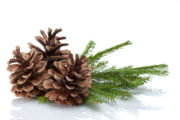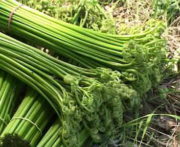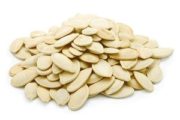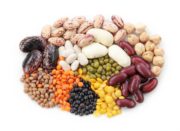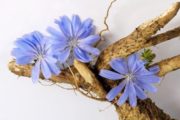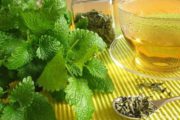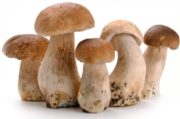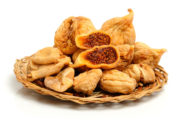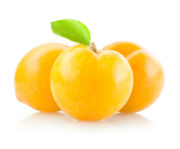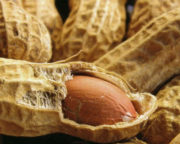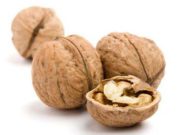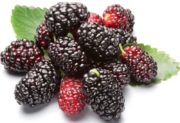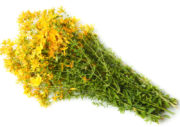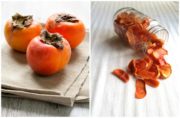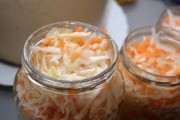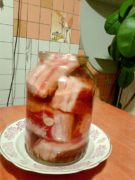Drying
How to properly dry spruce, cedar and pine cones - we dry conifer cones at home
The use of dried material from cedar, pine and fir cones is widely used in arts and crafts. The cones themselves are already decorative objects created by nature. A huge number of all kinds of crafts that you can do yourself at home simply excites the imagination. In addition, cones are used in folk medicine, and also as a flammable material for kindling samovars. We’ll talk in detail about how to properly dry conifer cones in this article.
How to dry bracken fern at home
Dried fern came to us from Korean cuisine, but it has taken root so well that those housewives who have tried it at least once certainly want to prepare bracken fern for future use.
Dried pumpkin seeds: all methods of preparation - how to dry pumpkin seeds at home
Pumpkin seeds are very tasty and healthy. They contain a lot of calcium, which has a beneficial effect on the skin, teeth and nails.Also, the seeds of this vegetable contain substances that help fight male sexual diseases at an early stage. The maximum concentration of nutrients is contained in the raw product, but such seeds cannot be stored for a long time, as they quickly begin to rot and deteriorate. The best way to preserve seeds for a long time is to dry them.
How to dry grain and green beans at home - preparing beans for the winter
Beans are legumes rich in protein. Both pods and grains are used for culinary purposes. Bean pods with young seeds are a source of dietary fiber, vitamins and sugars, and the grains, in their nutritional value, can be compared to meat. In folk medicine, peeled valves are used. They are used for therapeutic purposes in diabetes mellitus. How to preserve such a healthy vegetable for a long period of time? The main methods of preparing beans are freezing and drying. We will talk about how to properly dry beans at home in this article.
How to dry lavender at home
In some countries, lavender fields occupy vast areas, and the collection of this fragrant plant is on stream. Essential oils, flavors are made from it, and even used in cooking.
How to properly dry sage: methods of drying at home
Sage (salvia) is used for both medicinal and culinary purposes. The drying method you choose depends on what you need the sage for.
Harvesting chicory: methods for drying various parts of the plant at home
Many people consider chicory to be just a weed. But that's not true. All parts of this plant are considered beneficial: roots, greens and flowers. The benefits of chicory are determined by the substances included in its composition. This plant has anti-inflammatory, antimicrobial, sedative, antipyretic and vasodilating properties. If you care about your health and the health of your family, then you should stock up on this miraculous plant for the winter. You will learn how to properly dry chicory at home in this article.
How to properly dry lemon balm at home
Melissa has long been used by people in cooking, medicine, and perfumery. It has a pleasant lemon aroma and calms the nerves. To dry lemon balm for future use, you need to know some secrets.
Drying porcini mushrooms at home: how to properly dry mushrooms for the winter
The royal or white mushroom is valued by housewives for its rich taste, aroma, and for the many beneficial substances it contains. It would take a very long time to list them all, so first of all we will try to simply prepare porcini mushrooms correctly so as not to lose all these qualities.
Herbarium of leaves - how to properly dry leaves for a herbarium
Autumn always gives us a lot of natural material for implementing a wide variety of creative ideas.Leaves of various types and colors can become the basis for creating a herbarium, a panel with dried flowers or various paintings. To preserve the gifts of nature in their original form, you need to be able to properly dry leaves. If you follow all the subtleties of this process, they will not lose their bright colors and shape.
Sweet fig tree - how to properly dry figs at home
Who doesn't like the taste of figs? And it doesn’t matter at all what form it is in - fresh or dried, its unsurpassed taste can put any exotic fruit into the shadows. Speaking of fruits. Did you guess that figs are not even a fruit at all? And not even a berry! This is a fig tree flower, which is commonly called a wine berry.
Dried oregano at home - how to prepare oregano seasoning
Aromatic oregano is used for healing and in cooking. But here this medicinal herb appears under the name “oregano”. Everyone already knows oregano, unlike motherwort, ladanka, macerdushka, oregano, zenovka, but they are all the same plant.
Dried cherry plum for the winter
Cherry plum belongs to the plum subfamily and in some sources it is called cherry plum, therefore it must be dried in the same way as a not very large plum or a very large cherry.
Harvesting and drying peanuts
Although peanuts are a legume, we are nevertheless accustomed to calling them a nut. It grows well not only in the southern regions, but also in the middle zone, showing an excellent harvest. But it’s not enough to grow peanuts; you also need to preserve them properly.
How to dry nuts correctly
Walnuts are widely used in cooking and are not something exotic. However, many are faced with the fact that the nuts they put in storage turn black, dry out and become moldy. In principle, with any drying there is a certain percentage of defects, but this percentage can be reduced and losses minimized.
Dried thyme: methods of harvesting at home - how to dry thyme for the winter
Thyme, also known as thyme, is a perennial shrub that is quite common in wooded areas. Another name for this plant is thyme. The leaves and flowers are widely used both in folk medicine and for culinary purposes. Dried raw materials can be bought at the pharmacy at any time of the year, but supplies made with your own hands at home will be much more beneficial. The main thing is to follow some rules for its preparation when drying thyme.
Dried bird cherry: all methods of drying at home - how to dry bird cherry for the winter
The sweet-tart bird cherry berry is widely used both in cooking and in alternative medicine. At the same time, not only fruits, but also leaves, shoots, and bark are harvested for medicinal purposes. The fragrant bird cherry color is also in demand. Experienced herbalists also try to preserve it for the winter. The best and most popular way to store bird cherry is drying. We will talk about all the intricacies of this process in this article.
Dried mulberries: how to dry berries, leaves and bark - drying mulberries at home
Mulberry (mulberry) is a tree that produces large yields of berries. Their benefits are determined by their rich vitamin composition, which stimulates the immune system. Berry juice is also a preventative against various infectious and colds. However, mulberry fruits are very delicate, and therefore they cannot be stored fresh for a long time. To preserve as much of the healthy product as possible for the winter months, the berries are frozen or dried. Today we’ll talk about different ways to dry mulberries at home.
Herb St. John's wort: how to properly collect and dry St. John's wort at home
St. John's wort (Herba hyperici) is also called the “herb for 99 diseases.” This plant received this nickname due to its medicinal properties, which have a beneficial effect on the entire body. You can prepare St. John's wort yourself. To do this, you just need to know a few simple rules for collecting this plant and the intricacies of drying it at home.
Drying persimmons at home
In the East, persimmon is considered a “Divine Gift” and “Food of the Gods,” so a good host will always show you respect by treating you to dried persimmon. When dried, persimmon loses most of its astringency, leaving only a honey taste and aroma.

